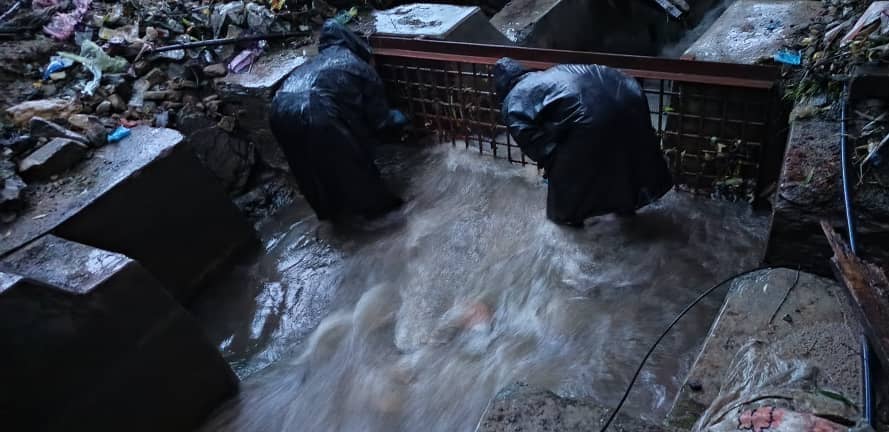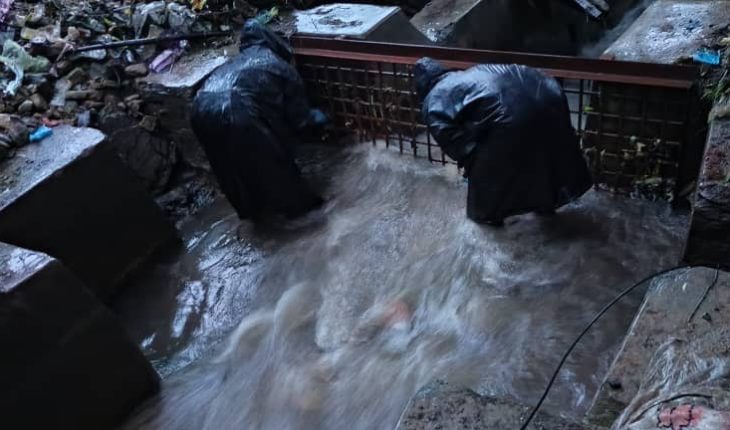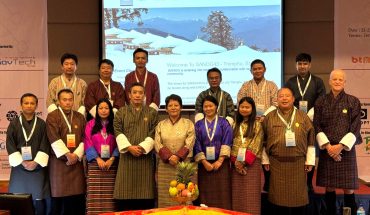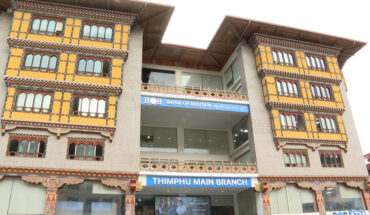
KINZANG DORJI TSHERING
Thimphu
Persistent water logging, sewage blockages, and overflows during the monsoon season continue to affect several areas of Thimphu, including Olakha, Zilukha above Tashichhodzong, and other vulnerable zones.
Even newly constructed sewage lines have faced challenges, raising concerns among residents about the city’s drainage and sewage infrastructure.
While the drainage and sewage systems function effectively under normal weather conditions, heavy rainfall continues to expose weaknesses, highlighting the need for comprehensive improvements.
Residents experiencing blockages or overflows are advised to report the issues directly to Thimphu Thromde, the authority responsible for managing the city’s water systems.
In response to these long-standing challenges, Thimphu Thromde has outlined a multi-year plan under the “Enhancing the Climate Resilience of Urban Landscapes and Communities in Thimphu-Paro Region” project, scheduled for implementation between 2025 and 2028.
The first phase, set to run from July to December 2025, focuses on redeveloping the storm water drainage system in the Old City area, which includes Motithang, Changangkha, and the City Core.
The plan includes the redevelopment of Primary Drain II, which spans 2.6 kilometers and carries a budget of Nu.16.2 million.
In addition, major and minor catch pits across the city will be improved to accommodate changes in drain sizes and connections from secondary drains, while waste traps will be installed to reduce blockages.
The Thromde has also identified five potential sites for nature-based solutions such as retention basins, rain gardens, and retention ponds to improve water absorption and manage storm water more sustainably.
Looking beyond 2025, Thimphu Thromde has mapped out subsequent phases of the drainage redevelopment.
In the first half of 2026, Primary Drain I and its lateral drains in Upper and Lower Chubachu will be redeveloped at a cost of Nu.25.5 million.
The latter half of the same year will see the redevelopment of Primary Drain III, covering the stretch from Chang Khorlo (RICB Colony) to Kaja Throm, with an estimated budget of Nu.24.9 million.
In 2027, the city plans to redevelop all secondary drains, while 2028 will focus on household connection drains, with a budget allocation of Nu.51.8 million for these upgrades.
While storm water drainage remains a priority, sewerage improvements are also underway.
During the 2024-25 fiscal year, Thimphu Thromde completed smaller sewer line connections under the “Thimthrom Road & Sewer Network Connection/Expansion Works” project, which had a budget of Nu.17.9 million.
For the 2025-26 fiscal years, additional sewer line connections are planned through ongoing infrastructure development packages, while long-term, citywide improvements are outlined in the Thimphu Structure Plan (TSP) 2023-24.
The Ministry of Information and Communications (MoIT) is the lead agency for implementing TSP projects spanning 2023 to 2047.
Highlighting the government’s commitment, Lyonpo Chandra Bahadur Gurung, Minister of MoIT, said that the ministry is working closely with Thimphu Thromde to assess critical drainage issues, prioritize immediate interventions, and mobilize resources to ensure timely solutions.
“We are committed to resolving drainage and sewage challenges efficiently to ensure the city’s resilience against extreme weather events,” Lyonpo said.
Meanwhile, residents have shared their experiences of the city’s drainage challenges, providing insight into the human impact of waterlogging and blockages.
Til Bdr Ghalley, a resident of Olakha, said that heavy rains make commuting and daily activities difficult, noting that streets often flood and, in some cases, homes are affected.
“It really disrupts daily life, especially for those commuting to work or school,” he added.
While he acknowledged that recent improvements along Norzin Lam have made a noticeable difference in certain areas, he emphasized that older neighborhoods, including Olakha, still face significant problems.
He pointed out that low-lying areas near old drains remain particularly vulnerable, with catch pits overflowing even during moderate rainfall.
Another resident, Ugyen Rangshel, reflected on Thromde’s responsiveness to citizen complaints.
He noted that while authorities often act quickly when problems are reported, full resolution can sometimes take longer than expected.
Ugyen stressed the need for long-term measures, including regular maintenance of older drains and catch pits, as well as innovative solutions such as retention ponds to handle heavy rainfall more effectively and reduce recurring flooding.
Thromde officials emphasize that while the city’s drainage system performs well under normal conditions, heavy rains continue to expose vulnerabilities, particularly in older neighborhoods and low-lying zones.
The planned upgrades, which span storm water drainage redevelopment, household connection improvements, and the integration of nature-based solutions, aim to provide long-term, sustainable solutions to recurring problems.
With a clear roadmap, multi-year implementation, and substantial budget allocations, authorities hope that Thimphu’s residents will experience significant improvements in water management during future monsoon seasons.





